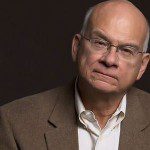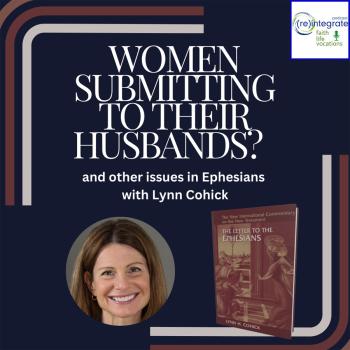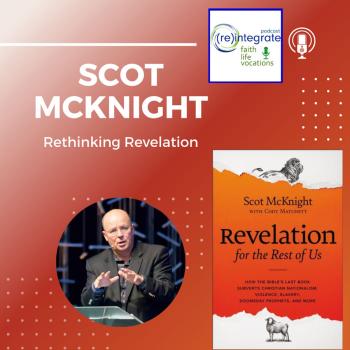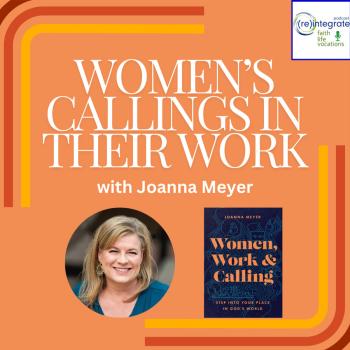The Missional Church in the World Through Vocations.
The United States has been shifting into what can be called a post-Christian, postmodern and pluralistic culture. As a result, the Christian church has suffered marginalization and has lost its influence in the culture. In response, a new “missional church” movement has gained traction in the United States. As Michael Goheen summarizes,
“Culturally, rapid changes are taking place in North American culture from a modem to postmodern society. Ecclesiastically, the church finds itself in a new situation dislocated from its former place of importance. What does it mean for a church increasingly on the margins of North American culture to encounter its postmodern culture in a missionary way? That is the question that drives [the missional church] movement.”[1]
The recent emergence of interest in how the North American church can become “missional” was inspired by Lesslie Newbigin’s The Other Side of1984: Questions for the Churches,[2] a monograph that was published by the British Council of Churches and widely disseminated and discussed. Newbigin had returned to England after four decades in the foreign mission field of India and had both an outsider’s and a missionary’s insight into Western Christianity.
According to a seminal book on the missional church written in 1998, Missional Church: A Vision for the Sending of the Church in North America, “The missiological consensus that Newbigin focused on our situation may be summarized with the term missio Dei, ‘mission of God.’”[3] The authors of Missional Church were from diverse denominational backgrounds—Baptist, Methodist, Mennonite, Christian Reformed, and Presbyterian-USA—including Darrel Guder, Alan Roxburgh and Craig Van Gelder. They formed The Gospel in Our Culture Network (GOCN) to explore how the church can undertake the challenge of reaching North America. They were eager to reassess the church-centric focus of Christian ministry in the West and, inspired by Newbigin’s insights, they determined that they should follow the lead of the missiologists of the past century who had transferred the focus to a God-centered understanding of the church’s mission, based on the missio Dei. They write,
“We have come to see that mission is not merely an activity of the church. Rather, mission is the result of God’s initiative, rooted in God’s purposes to restore and heal creation. ‘Mission’ means ‘sending,’ and it is the central biblical theme describing the purpose of God’s action in human history.”[4]
Beyond those in GOCN circles, there is a growing consensus that the North American evangelical church needs a deeper understanding of the mission of God and, related to that, the mission of God’s people.[5] How does a biblical understanding of the missio Dei impact the way a local church functions? This is an issue that this study will explore.
Alan Hirsch, in an influential book in the missional church movement, The Forgotten Ways: Reactivating the Missional Church, asserts that a missional reading of the Great Commission to make disciples (Matthew 28:18-20) “requires that we see that Jesus’s strategy is to get a whole lot of versions of him infiltrating every nook and cranny of society by reproducing himself in and through his people in every place throughout the world.”[6]
But Christians have already infiltrated the “nooks and crannies of society.”
They have done so through their vocations.
That is what we will be exploring here at the (re)integrate blog in the coming weeks.
____
[1] Michael W. Goheen, “The Missional Church: Ecclesiological Discussion in the Gospel and Our Culture Network in North America,” Missiology 30, no. 4 (October 1, 2002): 1.
[2] Lesslie Newbigin, The Other Side of 1984: Questions for the Church (Geneva: WCC Publications, 1984), http://www.newbigin.net/assets/pdf/83os84.pdf, accessed March 1, 2013.
[3] Darrell L. Guder, ed., Missional Church: A Vision for the Sending of the Church in North America (Grand Rapids, MI: Eerdmans, 1998), Kindle Edition, Location 165.
[4] Ibid, Location 170.
[5] For instance, many organizations and affiliations have been formed since the initial GOCN, including the Verge Network, 3DM, Forge, Missio Alliance, GCM Collective, Missional Church Network, The Ecclesia Network. Also, many denominations have initiated programs to help foster “missional” conversations in their churches, for instance, the Evangelical Presbyterian Church’s “Vision 21,” and The Presbyterian Church (USA)’s Missional Church Project.
[6] Alan Hirsch, The Forgotten Ways: Reactivating the Missional Church (Grand Rapids, MI: Brazos Press, 2009), 113.
Image by Albert. Used with permission. Sourced via Flickr.













